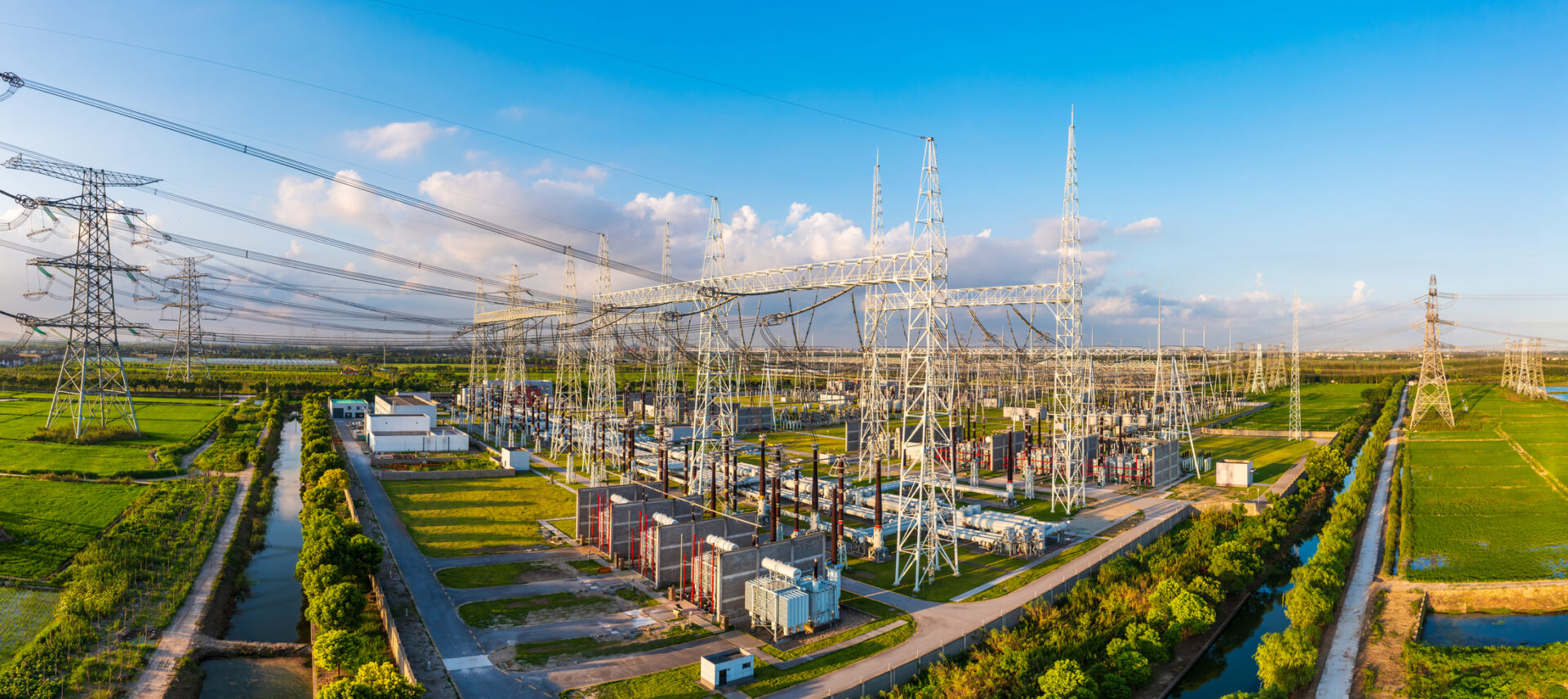News & Insights
Grid modernization: navigating the energy transition
Updated infrastructure and advanced technologies are paving the way to modernize North America’s electricity grid. This article sheds light on what’s driving the change, challenges with the move to a more distributed model, and the technologies that are part of modernization.

What is grid modernization?
Grid modernization refers to the comprehensive upgrade of the existing electrical grid to make it more efficient, reliable, resilient, and capable of integrating a diverse mix of energy sources, including renewable energy sources. The traditional electric grid, which was designed primarily for centralized power generation and one-way power flow, is being reimagined and rebuilt to accommodate the current demands and technology solutions.
Drivers propelling the move to modernization
The push for grid modernization is driven by four main factors: environmental concerns, regulatory pressures for decarbonization, increased demand, and utility deregulation.
- Environmental drivers. With tightening environmental regulations and growing concerns about climate change, there is a decisive shift away from fossil fuels. Renewable energy sources like hydro, nuclear, solar, renewable natural gas, and wind are becoming more prominent, driven by a diverse range of stakeholders. These sources not only help meet environmental goals but also enhance the diversity and resilience of the energy mix.
- Decarbonization of end users. Commercial, institutional, and industrial sectors are increasingly focused on decarbonizing their operations, driven by regulatory mandates and corporate sustainability goals. This trend requires renewables from offsite generation, necessitating a modernized grid capable of accommodating these new demands.
- Increased need. While electric vehicles and next-generation heating and cooling systems were expected to drive increased electricity demand, hyperscale data centers have emerged as a major factor. These centers are significantly boosting electricity needs, with some areas projected to see demand double in less than five years.
- Utility deregulation. Deregulation has introduced competition into the utility market, pushing utilities to modernize their operations to stay economically viable. Legacy power generation methods are being replaced with more efficient and cost-effective technologies. This competitive landscape fosters innovation, encouraging utilities to adopt advanced grid management practices and technologies.
The intersection of grid modernization, renewable energy, and decentralized production
The existing grid infrastructure was designed for a centralized generation model, where power flowed from a few large plants to consumers. This traditional model is being upended by the rise of new decentralized energy sources—everything from expansive wind farms to a handful of solar panels on the roof of a residence. While the shift to decentralized production offers clear benefits—such as reducing dependence on single points of failure—it also presents significant challenges during the transition.
Complexity and control
As the number of generation sources increases, so does the complexity of managing the grid. Utilities, which once had centralized control, now face the daunting task of integrating and managing numerous, dispersed generation points. This decentralization complicates grid management and reliability, requiring sophisticated coordination and advanced technologies to ensure a stable and efficient power supply.
Knowledge gaps
Many new players entering the field of decentralized production lack the deep, institutional knowledge traditionally held by utilities. This knowledge gap can lead to significant missteps and inefficiencies. For instance, projects might falter due to failures in securing necessary interconnection agreements or a lack of understanding of the intricacies of grid integration. Bridging this gap is crucial for the successful implementation of decentralized energy solutions.
Expanded skill requirements
Decentralized production demands new skill sets, particularly in facility management and operations. Engineers and facility managers, for example, must now oversee complex energy systems that integrate onsite generation with the broader grid. This requires continuous education and training to develop the expertise needed for effective management and optimization of these systems.
Impact of economic volatility
Economic factors, such as high interest rates, have significantly impacted every level of grid modernization, from routine maintenance to the initiation of new projects. Many renewable energy projects, including coastal wind farms and solar fields, are on hold, awaiting more favorable economic conditions to begin. To ensure the complete transition to a modernized grid, there is a pressing need for reliable and alternative funding sources that can support these projects through periods of economic volatility.
In light of these challenges, several key technology innovations are emerging as crucial drivers in the evolution of the energy grid. These advancements not only help manage the complexities of integrating decentralized and renewable energy sources but also pave the way for a more resilient and efficient energy infrastructure.
What technology innovations are driving grid modernization?
As the energy landscape evolves, some key advancements are helping to address the complexities and challenges associated with integrating decentralized and renewable energy sources into the existing grid infrastructure.
What is a “smart grid”?
The term “smart grid” is often used to describe monitoring and controlling power delivery on the final mile between the substation and the customer. A more accurate term is Advanced Metering Infrastructure (AMI), which leverages digital technology to monitor and manage electricity flow. AMI enables real-time data collection and analysis, allowing for more efficient energy distribution, rapid response to outages, and better integration of renewable energy sources. Smart meters, a key component of AMI, can provide utilities and consumers with detailed insights into energy usage, promoting energy efficiency and cost savings.
Battery energy storage solutions (BESS)
Energy storage systems, such as batteries, can be used to manage the intermittent nature of renewable energy sources like solar and wind. However, the necessity of a BESS depends on the context of use. For many facilities, it may be more practical to use the grid as the primary source where energy is distributed and shared, rather than investing in standalone storage solutions.
Digital relays
Digital relays offer significant advancements over traditional electromechanical relays, providing enhanced functionality such as precise fault detection, real-time monitoring, and advanced diagnostics. They can quickly isolate faults to prevent widespread outages and reduce the risk of equipment damage. Additionally, digital relays facilitate remote operation and integration with smart grid technologies, contributing to a more reliable and efficient grid.
Prefabricated substations
Prefabricated substations are a game-changer in grid modernization, offering a faster, more efficient way to deploy critical infrastructure. These modular units are built off-site in a controlled environment, reducing weather delays that can occur in the field. Prefabricated substations can be tailored to client standards then, rapidly installed, minimizing downtime and disruption. Their modular nature also allows for easy scalability and flexibility, making them ideal for meeting the dynamic needs of an expanding modern grid.
Microgrids
Microgrids are localized grids—usually privately owned—that can operate independently or in conjunction with the main grid. They enhance grid resilience by allowing campuses, hospitals, military bases, and communities to manage generation of electricity onsite, and maintain power during broader grid outages.
Site hardening for substations
A growing need in grid modernization is the addition of physical security measures such as video surveillance, berms, ballistic shields, protective walls, and motion detection systems. These measures represent a substantial investment but are crucial for protecting critical infrastructure from physical threats.
Digital twins
Digital twins for the grid are emerging. These virtual replicas of physical grid components and systems, provide real-time data and advanced simulation models enabling utilities to simulate different scenarios and predict potential issues. Digital twins help in proactive maintenance, reducing downtime, and enhancing the overall reliability of the grid. This technology supports informed decision-making and strategic planning, driving efficiencies and innovation in grid management. While the technology is not new, it’s use in grid management is in its infancy.
Salas O’Brien’s role in grid modernization
Salas O’Brien is at the forefront of supporting clients through the energy transition, offering expertise and innovative solutions across various aspects of grid modernization for both utilities and end users, including:
Energy transition planning
Salas O’Brien provides comprehensive energy transition planning services, helping organizations navigate the complex shift to renewable and decentralized energy sources. Our team of experts collaborates with clients to develop strategic roadmaps that address both immediate needs and long-term goals, ensuring a smooth and efficient transition to a modernized grid.
Transmission and distribution
Salas O’Brien offers advanced solutions for upgrading existing infrastructure and deploying new technologies. From smart grids and AMI to digital relays and energy storage systems, we help clients optimize their energy distribution networks, improve reliability, and reduce operational costs.
Prefabrication design
Salas O’Brien’s experience working for fabricators, utilities, and facility owners give us unmatched capabilities in leveraging prefabrication practices. Prefabricated substations can be tailored to client standards then, rapidly installed, minimizing downtime and disruption. Their modular nature also allows for easy scalability and flexibility, making them ideal for meeting the dynamic needs of an expanding modern grid.
Site hardening
Salas O’Brien delivers robust turnkey site hardening solutions, including design for video surveillance, berms, ballistic shields, protective walls, and motion detection systems. These measures safeguard substations and other key assets from physical threats, ensuring the security and continuity of energy supply.
As the energy landscape continues to evolve, Salas O’Brien is committed to leading the way in grid modernization. We can help clients build a more resilient, efficient, and sustainable energy future. Reach out to our contributors below to discuss your modernization project.
For media inquiries on this article, reach out to Stacy Lake, Director of Corporate Communications

Jamie Landers, PE
Jamie Landers is a market leader in energy and utility systems and helps clients identify opportunities to reduce operation costs, improve reliability, and deliver new services. He is well-known in the industry for his ability to drive progress and resolve problems. Jamie serves as a Senior Vice President at Salas O’Brien. Contact him at [email protected].

Mark Andre, PE
Mark Andre is a professional engineer who specializes in power and utilities with a focus on substation design, transmission and distribution. Mark is a leader in grid modernization with a focus on the transition to renewable energy sources. Mark serves as an Associate Vice President at Salas O’Brien. Contact him at [email protected].